Black eyed peas, also known as cowpeas, are not only a staple in many regions but also a nutritional powerhouse. These creamy white beans with black marks or “eyes” are a versatile ingredient that can be used in a variety of dishes, from salads to soups and traditional recipes like Hoppin’ John. But it’s not just their versatility that makes them impressive.
Black eyed peas are highly nutritious, providing a rich source of fiber, protein, complex carbs, and antioxidants. They offer numerous health benefits, including improved digestion, lower blood pressure, weight management, and support for eye and skin health. Whether you’re looking to add more nutrients to your diet or explore new flavors, black eyed peas are a fantastic addition to any meal.
Key Takeaways:
- Black eyed peas are a creamy white bean with black marks or “eyes.”
- They are highly nutritious, rich in fiber, protein, complex carbs, and antioxidants.
- Black eyed peas offer numerous health benefits, including improved digestion, lower blood pressure, weight management, and support for eye and skin health.
- They can be enjoyed in various ways, including salads, soups, and traditional recipes like Hoppin’ John.
- Add black eyed peas to your diet to boost your nutrient intake and explore new flavors.
Nutritional Value of Black Eyed Peas
When it comes to nutrition, black eyed peas are a powerhouse. This humble bean offers a range of essential nutrients that can support your overall health. Let’s take a closer look at the nutritional value of black eyed peas.
A half-cup serving of cooked black eyed peas provides:
- Calories: 160
- Fat: 0.6g
- Carbs: 33.5g
- Protein: 5.2g
- Fiber: 8.3g
- Sugar: 5.3g
In addition to being low in fat and calories, black eyed peas are packed with important nutrients. They are a good source of:
- Iron: important for oxygen transport and energy production
- Calcium: vital for bone health
- Potassium: helps maintain healthy blood pressure
- Magnesium: crucial for muscle and nerve function
- Copper: supports the production of red blood cells
- Zinc: important for immune function and wound healing
- Folate: essential for cell growth and development, especially during pregnancy
- Vitamins A and K: contribute to eye, skin, and bone health
- Manganese: necessary for metabolism and bone formation
The high fiber content in black eyed peas is particularly beneficial. Fiber aids digestion, promotes bowel regularity, and helps regulate blood sugar levels. Including black eyed peas in your diet can support a healthy digestive system and overall well-being.
To summarize, black eyed peas are not only delicious but also highly nutritious. They offer a range of essential nutrients that can support your overall health. Incorporating black eyed peas into your meals can provide numerous health benefits, thanks to their impressive nutritional profile.
Health Benefits of Black Eyed Peas
Black eyed peas offer several health benefits. They are rich in folate, which is essential for pregnant women to prevent birth defects in newborn babies. The fiber and protein content of black eyed peas aid in weight management and provide sustained energy levels.
These beans may also help lower blood pressure, reduce inflammation, lower cholesterol levels, and support eye and skin health. The calcium in black eyed peas supports bone strength, while the soluble fiber promotes ease of digestion.
Here are some key health benefits of black eyed peas:
- Folate: Black eyed peas are a great source of folate, a B vitamin that is crucial for pregnant women to prevent birth defects in newborn babies.
- Weight Management: The fiber and protein content of black eyed peas helps to keep you feeling full for longer, aiding in weight management by controlling hunger and cravings.
- Lower Blood Pressure: The potassium in black eyed peas can help lower blood pressure, reducing the risk of cardiovascular diseases.
- Reduce Inflammation: Black eyed peas contain antioxidants that help reduce inflammation in the body, which is beneficial for overall health.
- Lower Cholesterol Levels: The soluble fiber in black eyed peas can help lower cholesterol levels, reducing the risk of heart disease.
- Support Eye and Skin Health: Black eyed peas contain nutrients like vitamin A and antioxidants that are important for maintaining healthy eyes and skin.
- Bone Strength: The calcium in black eyed peas supports bone strength and helps prevent the risk of osteoporosis.
- Easy Digestion: The soluble fiber in black eyed peas promotes ease of digestion and helps maintain a healthy digestive system.
With their numerous health benefits, black eyed peas are an excellent addition to your diet. Consider incorporating them into your meals to enjoy their nutritional advantages.
How to Cook Black Eyed Peas
Black eyed peas are a versatile ingredient that can be cooked in various ways. Whether you have dried black eyed peas or canned ones, here’s a simple guide on how to prepare them:
Preparing Dried Black Eyed Peas:
If you have dried black eyed peas, follow these steps:
- Soak the peas: Before cooking, it’s best to soak the dried black eyed peas overnight. This helps soften them and reduce the cooking time. Alternatively, you can use the quick soak method by bringing the peas to a boil, then letting them sit for an hour.
- Cooking the peas: After soaking, drain the water and rinse the peas. Place them in a pot and cover with fresh water. Bring the water to a boil, then reduce the heat to a simmer and cover the pot. Cook for about 40 minutes or until the peas are tender.
Using Canned Black Eyed Peas:
If you have canned black eyed peas, you can use them directly in your recipes without soaking or boiling. Simply drain and rinse the peas before adding them to your dish.
Now that you know how to cook black eyed peas, you can confidently incorporate them into your favorite recipes or try new ones. From soups and stews to salads and side dishes, black eyed peas add a delicious and nutritious touch to your meals.
Black Eyed Peas Recipes
Looking for delicious ways to incorporate black eyed peas into your meals? Look no further! Whether you’re a fan of traditional Southern American dishes or enjoy experimenting with flavors, black eyed peas can be a versatile ingredient in various recipes.
Hoppin’ John
One popular and classic black eyed peas recipe is Hoppin’ John. This traditional Southern American dish combines black eyed peas, rice, smoked pork, and onions, simmered to perfection. Hoppin’ John is often enjoyed on New Year’s Day for good luck and prosperity.
Salads and Soups
Black eyed peas can also be added to salads and soups for a nutritious and hearty meal. Toss them into a refreshing salad with fresh vegetables like tomatoes, cucumbers, bell peppers, and onions. For a comforting soup, combine cooked black eyed peas with broth, vegetables, and aromatic herbs and spices.
Bean-Based Creations
The mild flavor and creamy texture of black eyed peas make them a great addition to bean-based creations. Mash them into a flavorful hummus, blend them into bean-based fritters, or incorporate them into chili for a delicious twist. You can even try creaming black eyed peas for a creamy and comforting side dish.
Incorporating black eyed peas into your recipes not only adds a unique taste but also provides a nutritional boost. These versatile legumes are a good source of fiber, protein, vitamins, and minerals, making them a nutritious choice for any meal.
| Recipe | Description |
|---|---|
| Hoppin’ John | A traditional Southern American dish with black eyed peas, rice, smoked pork, and onions. |
| Black Eyed Peas Salad | A refreshing salad with black eyed peas, fresh vegetables, and tangy dressing. |
| Black Eyed Peas Soup | A warm and comforting soup with black eyed peas, vegetables, and aromatic herbs and spices. |
| Black Eyed Peas Hummus | A flavorful hummus made with black eyed peas, olive oil, and various spices. |
These are just a few examples of the many delicious recipes you can create with black eyed peas. Get creative in the kitchen and explore the versatility of these nutritious legumes!
Black Eyed Peas Salad Recipe
If you’re looking for a refreshing and nutritious dish, a black eyed peas salad is a fantastic option. This recipe combines cooked black eyed peas with a variety of fresh vegetables, creating a colorful and flavorful salad that will tantalize your taste buds.
To make this delicious salad, start by gathering the following ingredients:
- 2 cups of cooked black eyed peas
- 1 cup of cherry tomatoes, halved
- 1 cup of cucumber, diced
- 1 bell pepper, diced
- 1 small onion, finely chopped
Once you have all the ingredients ready, simply mix them together in a large bowl. The combination of black eyed peas with the vibrant vegetables creates a beautiful medley of flavors and textures.
Tip: You can customize this recipe by adding or substituting other vegetables based on your preferences. Feel free to experiment with ingredients like avocado, corn, or even radishes!
Next, it’s time to create a tangy dressing to bring all the flavors together. In a separate bowl, whisk together the following ingredients:
- 3 tablespoons of olive oil
- 1 tablespoon of mustard
- 2 tablespoons of vinegar or fresh lemon juice
- A pinch of salt and pepper
Pour the dressing over the salad and gently toss to coat all the ingredients. The combination of the tangy dressing with the fresh vegetables and creamy black eyed peas will create a delightful explosion of flavors.
To enhance the taste of your black eyed peas salad, consider adding some herbs and spices. Garlic, parsley, cumin, or even a dash of chili powder can add an extra kick of flavor. Be sure to adjust the seasonings according to your taste preferences.
This versatile salad can be enjoyed as a side dish alongside grilled meat or fish, or it can be a light and healthy meal on its own. It’s perfect for picnics, barbecues, or summer gatherings, providing a nutritious and satisfying option for everyone.
Now, let’s take a look at a tempting image of a vibrant black eyed peas salad:
With its vibrant colors, fresh ingredients, and tangy dressing, this black eyed peas salad recipe is a true winner. Prepare it for your next gathering or simply enjoy it at home for a burst of deliciousness and nutritional goodness.
Black Eyed Peas Soup Recipe
A warm and comforting black eyed peas soup can be a satisfying meal. Start by sautéing aromatics such as onions, garlic, and celery. Add cooked black eyed peas, along with broth or stock, and simmer until the flavors meld together. Enhance the taste with herbs and spices like thyme, bay leaves, or smoked paprika. You can also add vegetables like carrots, potatoes, or greens to make the soup heartier.
Enjoy a warm and flavorful bowl of black eyed peas soup using this simple recipe. The combination of tender black eyed peas, aromatic vegetables, and fragrant herbs and spices creates a satisfying soup that is perfect for chilly days. The versatile nature of black eyed peas allows you to customize the soup with your favorite vegetables and seasonings, making it a versatile and delicious addition to your meal repertoire.
Black Eyed Peas and Rice Recipe
Black eyed peas and rice is a classic combination that brings together rich flavors and textures. This recipe is a great way to incorporate the nutritious black eyed peas into a satisfying and versatile dish.
To start, sauté onions and garlic in a pan until they become fragrant and golden brown. This adds a depth of flavor to the dish.
Next, add cooked black eyed peas and rice to the pan. You can use previously cooked black eyed peas or canned ones for convenience. The combination of the peas and rice creates a hearty and wholesome base for the recipe.
Pour in broth or stock to ensure that the dish cooks evenly and remains moist. The liquid helps to infuse the rice with the flavors of the black eyed peas and spices.
Season the dish with your choice of spices like cumin, paprika, or chili powder. These spices add a pleasant warmth and depth of flavor to the dish.
Allow the mixture to simmer on low heat until the rice is thoroughly cooked and has absorbed the flavors of the peas. This ensures that each mouthful is bursting with deliciousness.
Serve the black eyed peas and rice as a flavorful side dish or elevate it to a main course by adding grilled chicken, shrimp, or vegetables. It’s a versatile recipe that can be enjoyed on its own or paired with your favorite proteins and vegetables.
So, whether you’re looking for a hearty side or a delicious main, give this black eyed peas and rice recipe a try. It’s a crowd-pleaser that combines the wholesome goodness of black eyed peas with the comforting flavors of rice.
| Ingredients | Instructions |
|---|---|
|
|
Black Eyed Peas Benefits for Pregnancy
Pregnancy is a crucial time for women, and maintaining optimal health is of utmost importance. One food that can greatly contribute to pregnancy health is black eyed peas. These small legumes pack a powerful punch when it comes to providing essential nutrients for both mom and baby.
Black Eyed Peas: A Nutritional Powerhouse
Black eyed peas are rich in folate, a B vitamin that plays a critical role in preventing neural tube defects in newborn babies. It is recommended that pregnant women consume adequate amounts of folate to support the healthy development of the baby’s brain and spinal cord. A half-cup serving of black eyed peas provides an impressive 44% of the recommended daily intake of folate.
Additionally, black eyed peas are a good source of other important nutrients such as iron, calcium, potassium, and magnesium. Iron is essential for maintaining healthy blood levels, while calcium supports the development of strong bones and teeth. Potassium and magnesium contribute to proper muscle function and help regulate blood pressure.
Benefits for Mom and Baby
Including black eyed peas in a pregnancy diet can provide several benefits for both mom and baby. The high folate content helps reduce the risk of birth defects and supports healthy fetal development. The iron in black eyed peas aids in preventing anemia, a common condition during pregnancy that can cause fatigue and weakness. Consuming black eyed peas also promotes healthy digestion due to their fiber content, relieving constipation and other gastrointestinal discomforts commonly experienced during pregnancy.
Furthermore, black eyed peas offer a good balance of complex carbohydrates and protein, providing sustained energy and supporting the growth and development of the baby. The antioxidants present in black eyed peas contribute to overall immune health and help protect against oxidative stress.
| Nutrient | Amount per half-cup serving |
|---|---|
| Folate | 44% of recommended daily intake |
| Iron | 1.62 mg |
| Calcium | 31.5 mg |
| Potassium | 135 mg |
| Magnesium | 34.5 mg |
Incorporating black eyed peas into a well-rounded, nutrient-dense pregnancy diet can contribute to a healthy and successful pregnancy. Whether enjoyed in salads, soups, or traditional dishes like Hoppin’ John, black eyed peas offer a delicious and nutritious addition to any mom-to-be’s meal plan.
Black Eyed Peas for Weight Management
When it comes to weight management, black eyed peas are a fantastic choice. These humble legumes are packed with fiber, protein, and slow-digesting, high-quality carbs that provide sustained energy and keep you feeling full for longer periods. By incorporating black eyed peas into your meals, you can harness their health benefits for weight loss or weight maintenance.
The combination of fiber, protein, and complex carbohydrates found in black eyed peas plays a key role in controlling hunger and cravings. The high fiber content promotes satiety, helping you eat less overall. Additionally, protein is known for its ability to increase feelings of fullness and boost metabolism, which can aid in weight management.
Furthermore, black eyed peas are relatively low in calories while being nutrient-dense, making them an ideal food for creating a calorie deficit without sacrificing essential vitamins and minerals. This approach is essential for healthy, sustainable weight loss.
In addition to their weight management benefits, black eyed peas offer numerous other health advantages. They are rich in antioxidants that protect the body against inflammation and oxidative stress. Black eyed peas also provide a variety of vitamins and minerals, such as folate, iron, and potassium, which support overall health and well-being.
By incorporating black eyed peas into your diet, you can enjoy not only a diverse range of nutrients but also support your weight management goals.
Try incorporating black eyed peas into your meals as a delicious and nutritious addition. Whether in salads, soups, or traditional recipes like Hoppin’ John, the versatility of black eyed peas allows for endless possibilities when it comes to meal planning. By leveraging the health benefits of black eyed peas, you can take proactive steps towards achieving and maintaining a healthy weight.
Conclusion
Black eyed peas are not only delicious but also offer a wide range of health benefits. These creamy white beans with black marks or “eyes” are a great source of nutrients, including fiber, protein, vitamins, and minerals. Incorporating black eyed peas into your diet can support digestion, lower blood pressure, aid in weight management, promote eye and skin health, and provide energy.
There are various recipes to enjoy the versatility of black eyed peas. From traditional dishes like Hoppin’ John to refreshing salads and comforting soups, black eyed peas can be incorporated into a variety of meals. Add them to salads with fresh vegetables, prepare a warm and comforting soup, or cook them with rice for a flavorful dish. The mild flavor and creamy texture of black eyed peas make them a versatile ingredient in your culinary repertoire.
Explore the different ways to incorporate black eyed peas into your meals and reap their nutritional benefits. Whether you’re looking for a nutritious side dish or a satisfying main course, black eyed peas can elevate the flavor and nutrition of your meals. So, why not give these delicious beans a try and discover the wonderful benefits they have to offer?

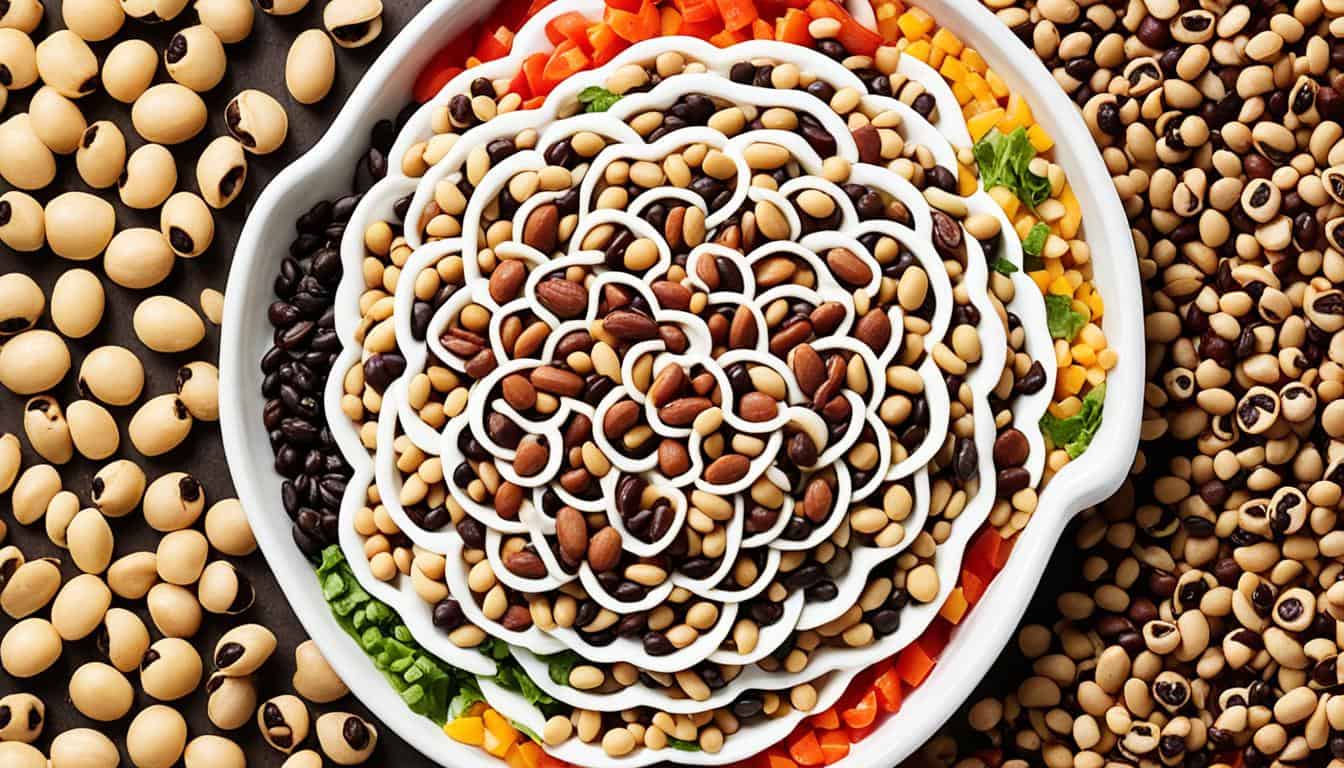
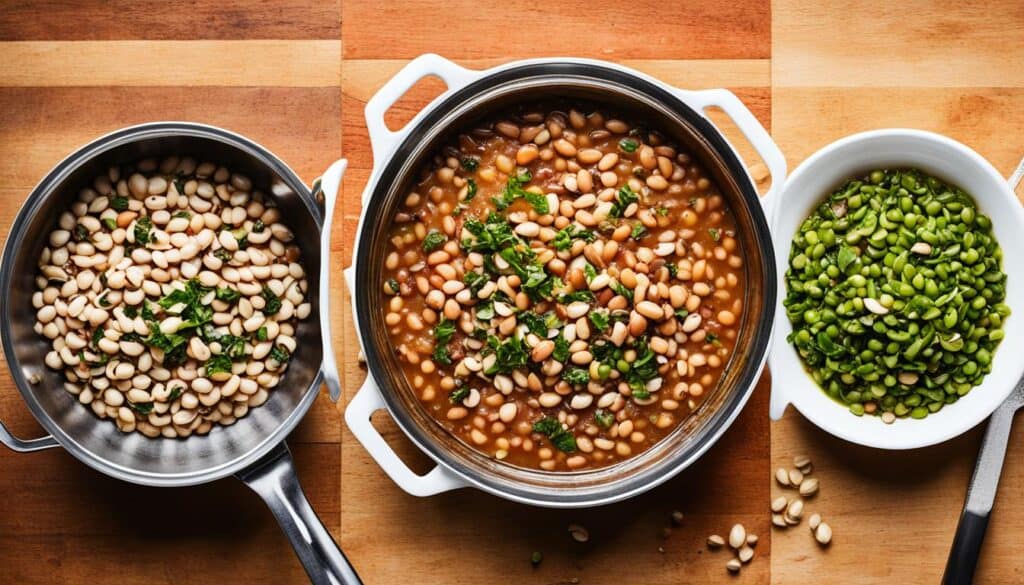
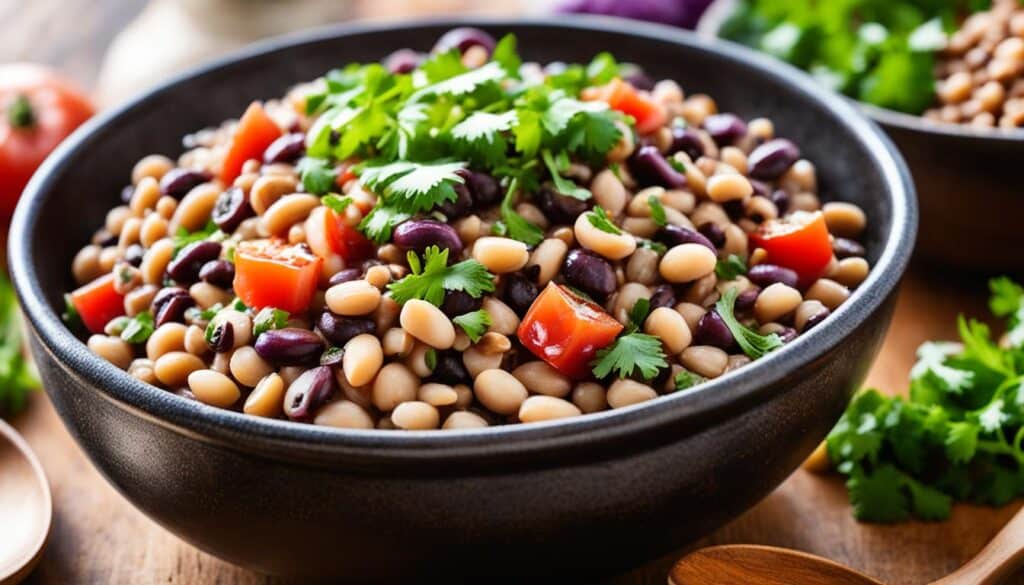
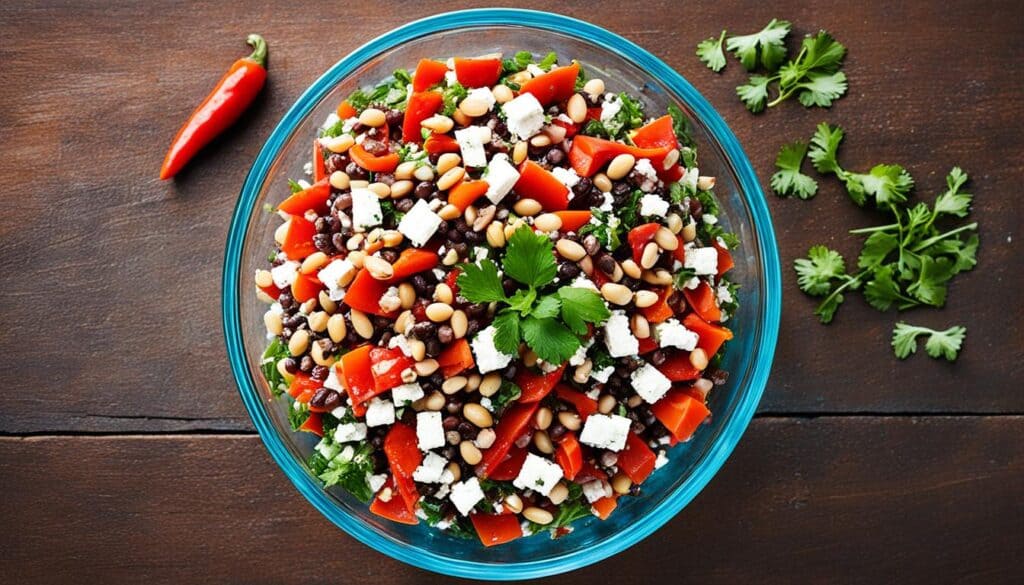
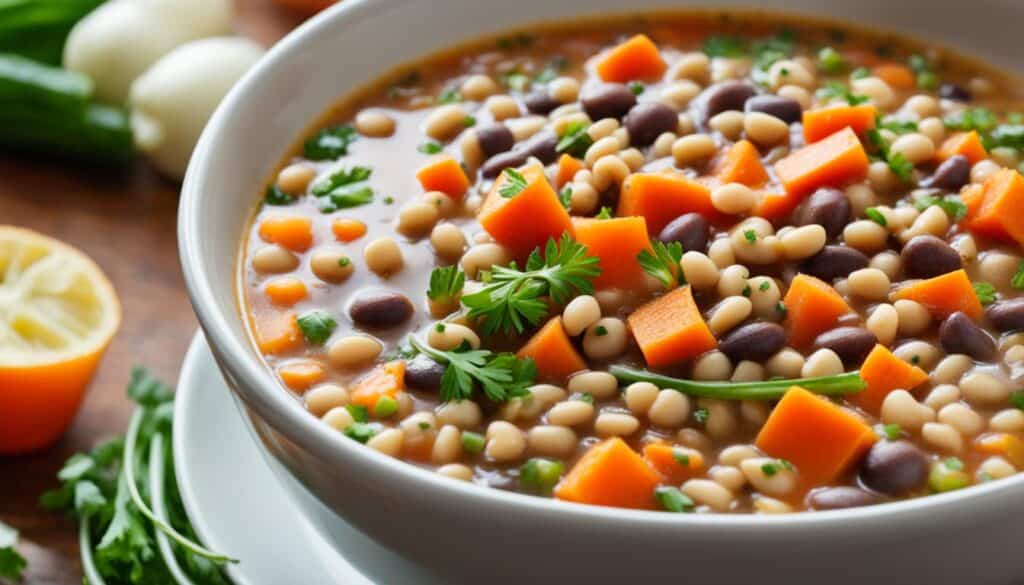
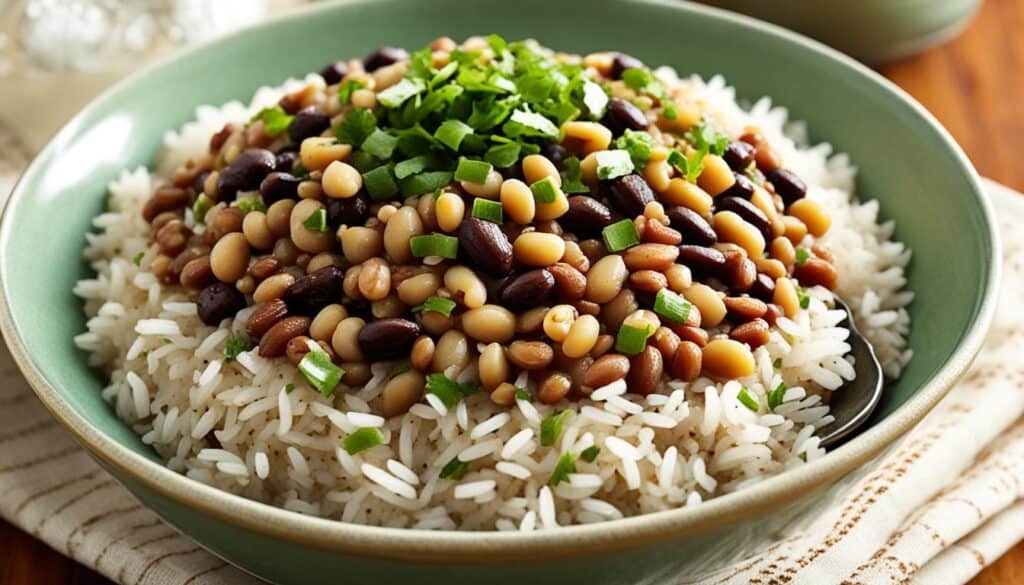

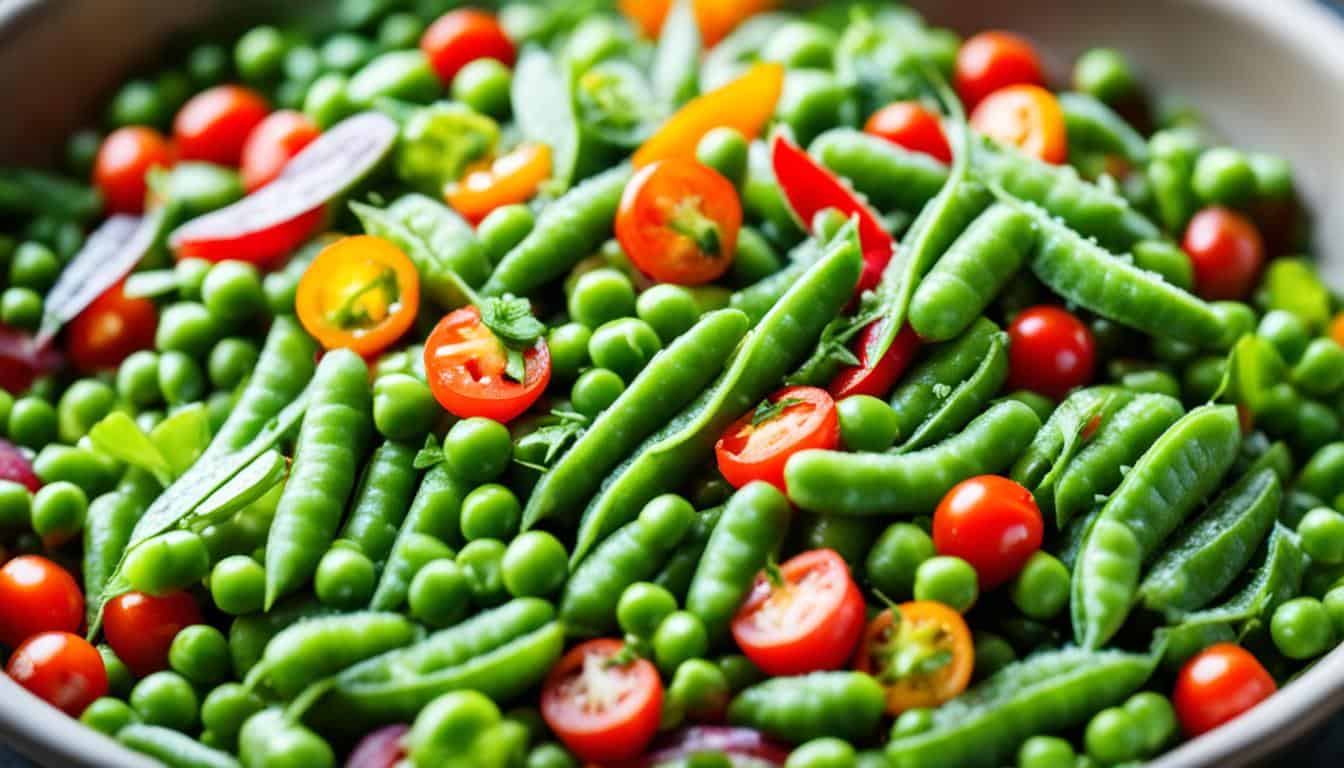
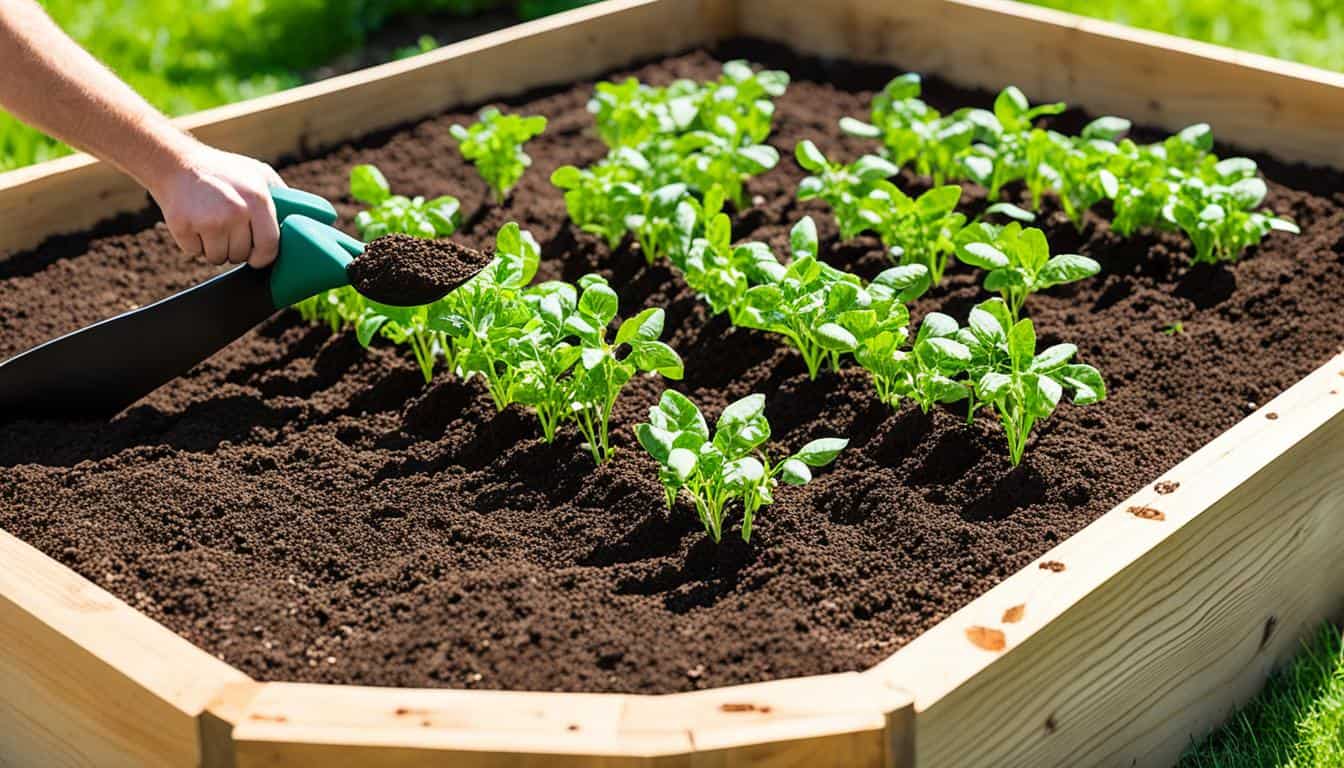
Leave a Reply